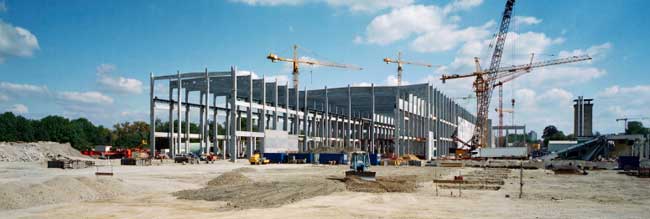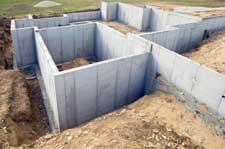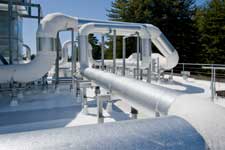The Environment of Successful Building-Part I: The Envelope
 From the moment an architect conceives a building design, theory leads to structural integrity. However, human design is a convergence of aesthetics, engineering and environment.
From the moment an architect conceives a building design, theory leads to structural integrity. However, human design is a convergence of aesthetics, engineering and environment.
The Envelope, Please
All building designs contain an envelope which has three primary functions:
- Support: the foundation, roof, walls, doors and windows. How well do they resist and transfer weight loads?
- Control of flows: air, heat and moisture vapor. How well does the structure manage building temperature and moisture transfers?
- Finish: physical protection (from weather and climate), indoor air quality (hygiene and public health), durability and energy efficiency. Is the occupant comfortable?
Architectural blueprints are much more than drawings; they are the end result of engineering design. A great building design illustrates how an amazing idea is feasible: from the foundation to the penthouse.
The Meaning of Support
Welcome to a universe of technical specifications which confuse the uninitiated. Take heart, because construction is also home to simple truths. The first architectural mandate is that the building design hold its structural integrity while distributing the weight of its contents. Structural integrity makes a strong building. Simple.
 Structural integrity includes all parts of a building envelope. The foundation must be established with careful attention to its integral formation. A concrete foundation must contain a mixture (cement, aggregate and water) which bonds to a desired compressive strength: the optimum ability to safely stand its ground. Walls, built from any material, must also distribute weight consistently while providing a structural divide for rooms. Doors and windows hold the same mandate for structural integrity.
Structural integrity includes all parts of a building envelope. The foundation must be established with careful attention to its integral formation. A concrete foundation must contain a mixture (cement, aggregate and water) which bonds to a desired compressive strength: the optimum ability to safely stand its ground. Walls, built from any material, must also distribute weight consistently while providing a structural divide for rooms. Doors and windows hold the same mandate for structural integrity.
The Meaning of Control
A building design must be able to withstand energy and building moisture variables, such as humidity, air and heat. Specifically, strong building design structures the management of elements. Air vents, vapor barriers and air conditioning systems are all tools by which architects control building moisture levels. That way, natural elements do not threaten the structural integrity of the building throughout its lifespan. That is the theory, at least.
Each building envelope is a world of parts that serve the overall purpose. The structural integrity of each part serves the structural integrity of the building itself.
The Meaning of Building Moisture Vapor Control
 Because so many building materials have a moisture element, any structure is strengthened by successful building moisture control. A concrete foundation, once poured and dried, still contains moisture vapors. Wood floors, once laid and dried, still absorb moisture vapors. Air inside a building always carries relative humidity (RH), and that RH reflects the air’s moisture vapor content. Changing RH outside a building influences the RH inside. Building materials, such as wood and concrete, continuously absorb and evaporate moisture vapors.
Because so many building materials have a moisture element, any structure is strengthened by successful building moisture control. A concrete foundation, once poured and dried, still contains moisture vapors. Wood floors, once laid and dried, still absorb moisture vapors. Air inside a building always carries relative humidity (RH), and that RH reflects the air’s moisture vapor content. Changing RH outside a building influences the RH inside. Building materials, such as wood and concrete, continuously absorb and evaporate moisture vapors.
A quality building design supports weight, controls energy and provides comfort. A structure may be beautifully installed, but its building moisture changes with the times. In that sense, the contents of a building’s envelope determine the building’s future.
Additional Reading:
The Environment of Successful Building Part II – The Installation
The Environment of Successful Building Part III – The Bond
The Environment of Successful Building Part IV – The Integrity